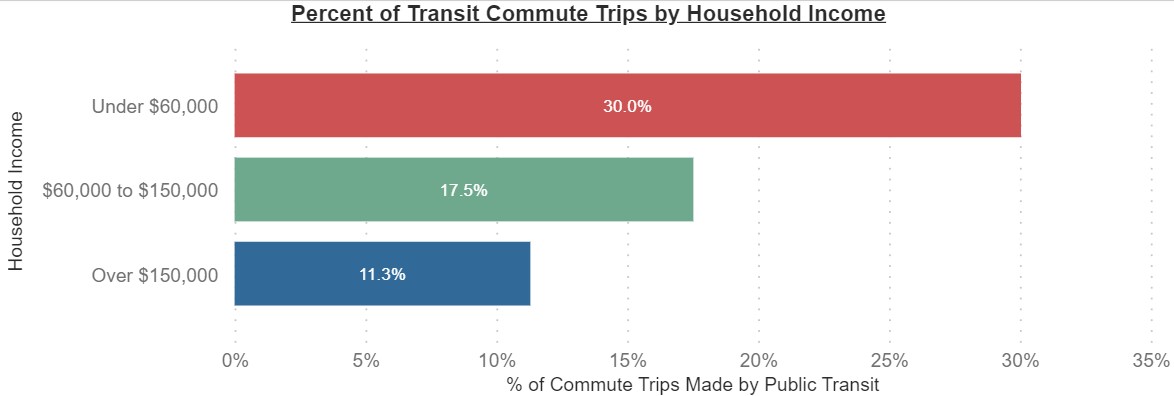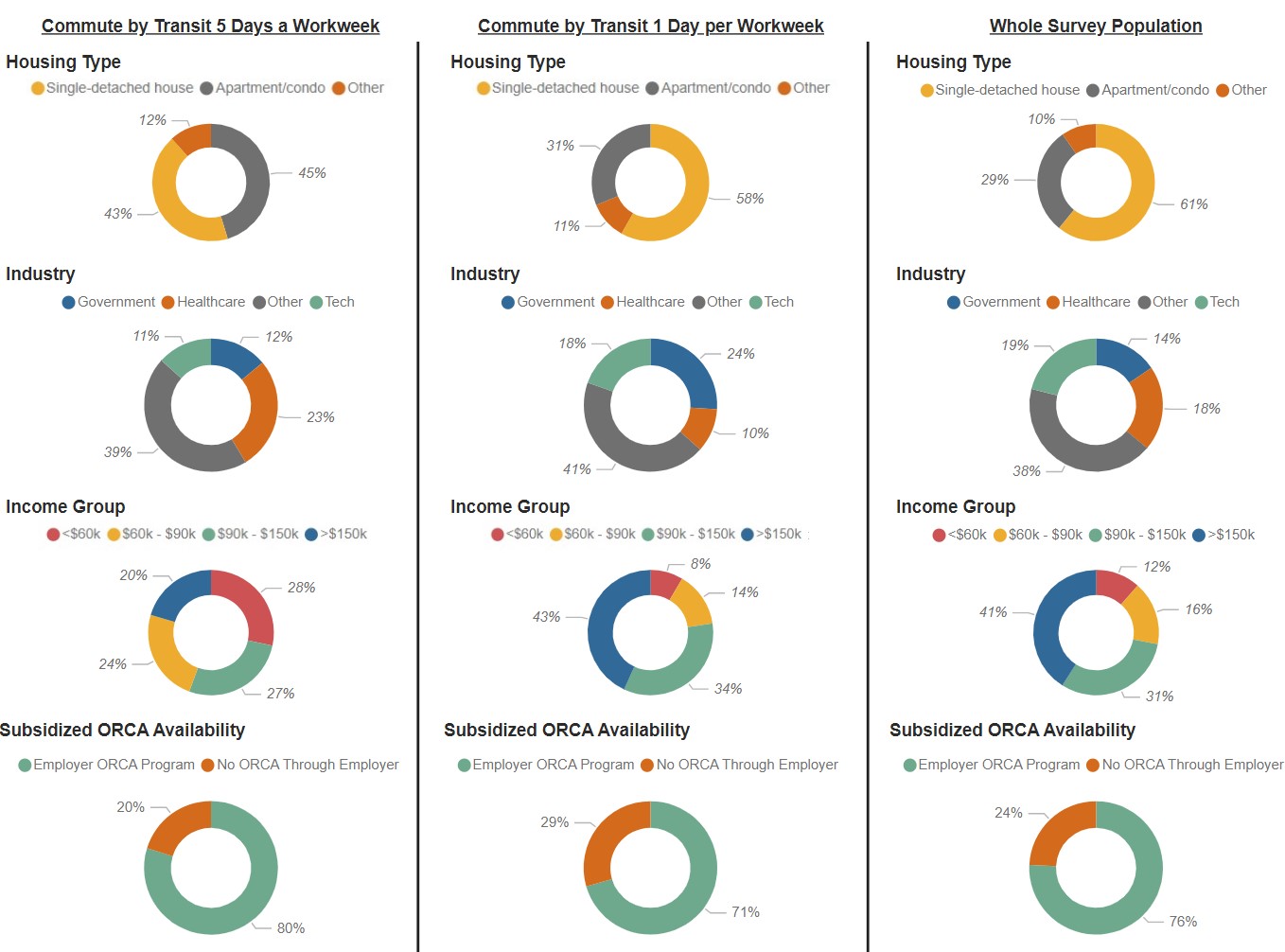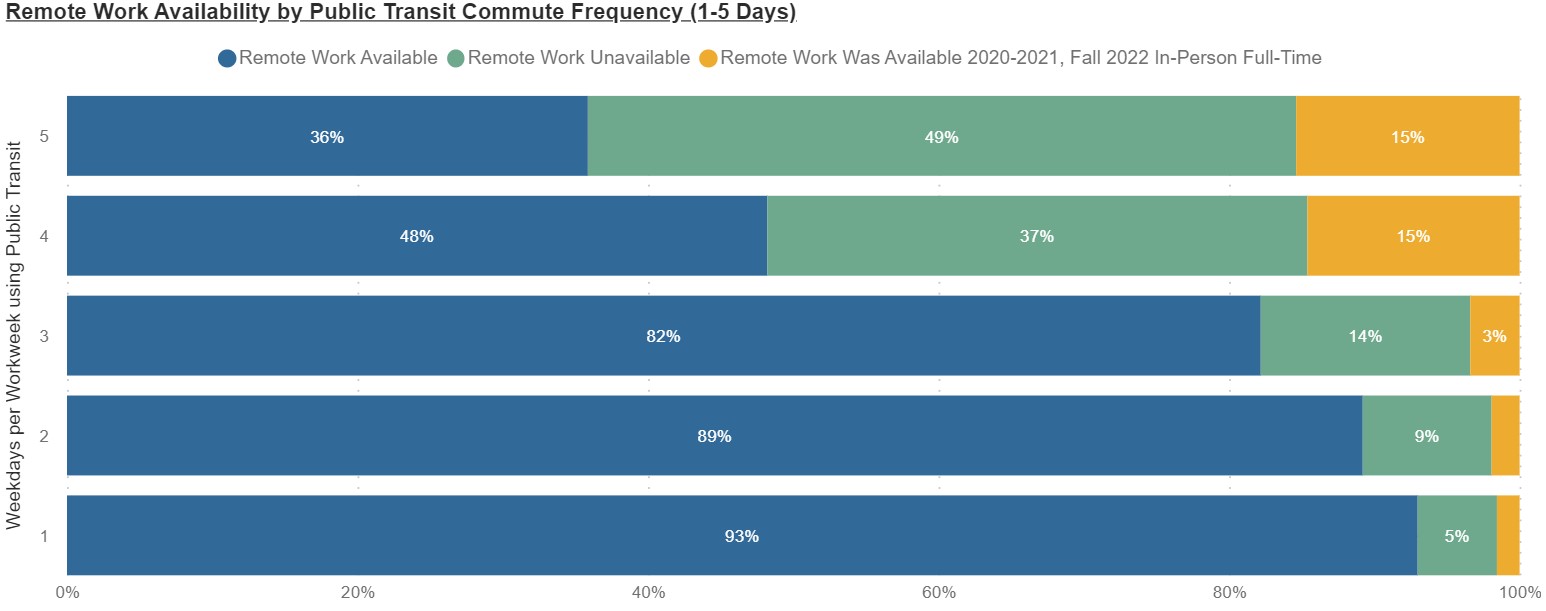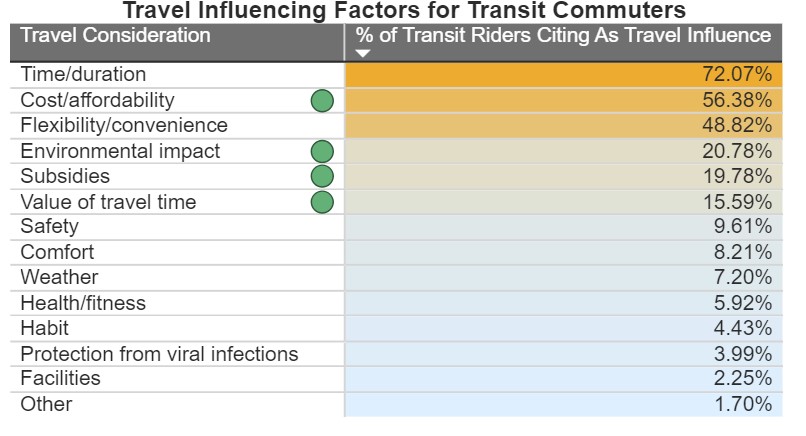Our 2022 Seattle Commute Survey asked people who work in Seattle how they get to and from work, school, healthcare, groceries and more. With 64,000 responses, we heard from more than one out of ten people who work in Seattle. For Ride Transit Month, we are taking a closer look at transit insights from this data to reveal connections between travel trends, industry, income, housing type, and more.
The top-line: more people take transit to work in Central Seattle than any other form of transportation, other than remote work – and that number is growing every day.
This survey is a snapshot in time from last fall, but it reveals important trends about transportation in Seattle at a unique moment. As more employers return to the office this data will change. Pairing our survey with other data, like King County Metro’s Rider Dashboard, tells us that transit continues to rebound across the region.
Who’s Riding Transit?
Our survey data reveals a lot about who is riding transit in Seattle, including some notable changes from before the pandemic. Pre-pandemic, Seattle stood out for a unique pattern: higher-income workers were more likely to take transit than lower-income workers. The pandemic flipped this on its head. In Fall of 2022, lower-income workers were most likely to ride transit. 30% of people in households with incomes under $60,000 reported taking transit to work, compared to only 11% of those making more than $150,000. This likely reflects who has continued working in-person throughout the pandemic and who has been able to work remotely.

Interestingly, transit usage also varies greatly by the type of home you live in. 22% of people living in apartments and condos reported using transit to get to work, along with 18% of people living in townhomes. Compare that to just 13% of people who live in single-family houses.
People who work in Central Seattle are also more likely to take transit. 18% of people going to work inside the Center City reported taking transit, compared to just 11% outside the Center City.
Not all transit riders are alike.
Our survey also found big differences between people who reported riding transit once a week, and those who are riding more often than that. Those differences largely come down to the industry they work in and how available remote work is.
A typical one-day-a-week transit rider works in government, and mostly works remotely. They make over $150,000 and live in a single-family house. Tech industry workers were also much more likely to take transit just once-a-week.
A typical five-days-a-week transit rider works in healthcare and has a job that must be done in-person. They make between $60,000 to $90,000 a year and live in an apartment.

As these profiles demonstrate, your ability to work remotely has a major impact on how often you ride transit. 93% of people commuting by transit once-a-week reported having remote work available to them. 89% of those riding twice per week and 82% riding three times reported the same. That number drops to just 48% for those riding four times per week. For those riding five days per week, only 36% report having remote work available to them, with nearly half saying it was never an option through the pandemic.

These trends point to an interesting insight: people who are riding transit less frequently are not usually choosing other forms of transportation to get to work, they’re just working remotely other days. When they do commute, they choose transit. Our data shows that the biggest reason transit ridership has dropped is not people choosing to drive, it’s people being able to work remote. One way to address this ridership drop? Focus on getting more non-commute trips onto transit. Our data shows that Seattleites mostly drive to places other than work, and that they take more of these trips than they do work trips.
More people are riding transit every day.
The King County Metro Rider Dashboard reports a 16.8% increase in riders during May 2023 compared to May 2022, or over 38,000 more daily boardings. Daily ridership also increased by over 12,000 just from April to May 2023. It’s important to note that in November 2022 when our Commute Survey closed, there were more than 27,000 less average daily boardings on buses than there are today.
And it’s not just buses: Metro also added more Vanpools in May than any other month since 2005 with 68 new Vanpools!
Transit riders are motivated by time, affordability, convenience, and… employer benefits like ORCA!
Just like commuters using other forms of transportation, transit riders are overwhelmingly motivated by core factors of how long their trips take, the cost of their trips, and flexibility and convenience. Investing in a fast, reliable, and affordable transit network is the key to attracting more riders. Beyond these core motivators, transit riders stood out in a few key considerations that affected their travel decisions more than other commuters.
More than other commuters, transit riders cited the environmental impact of their commute as motivation for riding transit. Unsurprisingly, transit riders also frequently shared that they chose transit because it allows them to make better use of their commute time. The ability to get work done, sit back and read a book, or catch up on the news rather than stressing through traffic makes life better.
Another top reason people say they use transit? Subsidies, like an employer-provided ORCA transit pass. At Commute Seattle, we’re proud that our work has a direct impact on promoting transit ridership and sustainable transportation. Schedule a free consultation with our team to learn how to provide this benefit at your workplace!

Learn more!
Want to dig deeper into our survey data and learn more about these transit tends? Contact us at info@commuteseattle.com to schedule a briefing with Commute Seattle staff!
